Measuring the future: How Greenwood’s PhD research is unlocking the carbon secrets of trees
Climate change and the knowledge gap
The climate crisis is one of the defining challenges of our time. Rising global temperatures, extreme weather events, and biodiversity loss are reminders of the urgent need to reduce carbon emissions and restore balance to the natural world. Trees and shrubs are often celebrated as one of the most powerful natural tools in the fight against climate change, thanks to their ability to absorb and store carbon.
But while we understand the principle, the truth is that we know surprisingly little about exactly how much carbon different species can store and how they will perform under future climate conditions. This lack of detailed knowledge presents a challenge for industries like horticulture, landscaping, and urban planning. If we are to design sustainable landscapes that lock up significant amounts of carbon, we need reliable data to guide decisions about which trees and shrubs to plant, and where.
Greenwood is working in partnership with the Royal Horticultural Society and the University of Sheffield on a pioneering PhD carbon research study, exploring how trees and plants capture and store carbon both in today’s climate and the climate we are predicted to face in 100 years’ time. By measuring everything from photosynthetic rates to root biomass, the research aims to fill a vital knowledge gap and support a new era of sustainable landscaping with longevity in mind.
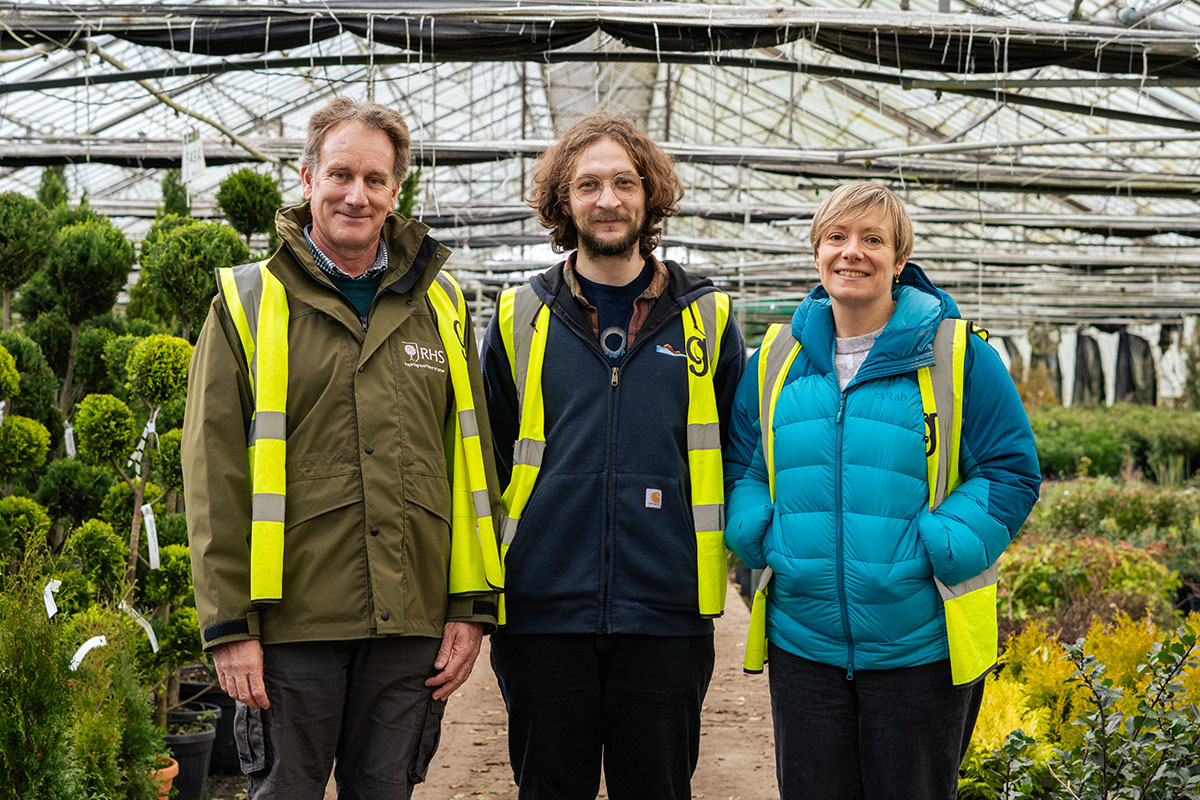
Dr Mark Gush (RSH), Louis Kosowicz (PhD Research Leader) and Dr Jill Edmondson (University of Sheffield) visiting Greenwood
Why it matters
The urgency of climate change means we must make every effort to cut emissions and capture carbon already in the atmosphere. The UK has legally committed to reaching net zero emissions by 2050, and the role of green infrastructure in achieving that goal is increasingly recognised. Landscapes, whether urban, parks, or roadside planting schemes, are not just for visual amenity. They can be part of a wider climate solution, sequestering carbon, regulating microclimates, and supporting biodiversity.
However, one of the biggest obstacles to maximising this potential is a lack of accurate knowledge about how much carbon plants store in cultivated green spaces, such as parks, gardens, housing developments, and city centres. While carbon storage in forest species is relatively well understood, thanks to long-standing measurement methods, these equations often do not apply to urban and landscaped areas, where land-use history, environmental conditions, and plant stress vary widely. Current estimates also frequently rely on broad averages, for example assuming root biomass is a fixed fraction of aboveground biomass, rather than being measured directly, which can lead to inaccurate reporting.
Trees store carbon in multiple ways. Woody stems, branches, and roots accumulate carbon over decades, while leaves and other above-ground tissues capture carbon seasonally. Yet these processes vary greatly between species, age, and environmental conditions. Understanding these differences is critical, especially as climate change is expected to alter growth rates, photosynthetic efficiency, and resource allocation within plants.
The PhD project aims to change this. By carefully measuring carbon content in different species and comparing results between present-day and future climate conditions, the study will provide real-world data that can be used by landscapers, architects, and policy makers. It will also build on existing sustainability work, including collaborative trials at RHS Wisley, and help to develop practical tools for more sustainable design.
Research and hypothesis
At the centre of this research is PhD research leader Louis, who is working under the guidance of academic leaders at the University of Sheffield, as well as the RHS. The title of his study focuses on quantifying the carbon storage capacity of trees and shrubs and predicting how this capacity may change as the climate warms.
The research has two main strands. The first is a long-term experiment at RHS Wisley, where trees are being grown and will eventually be harvested at different ages over a three-year period to precisely measure their carbon content over time, enabling us to build a model of carbon content over time within the studied species. The second strand uses climate-controlled growth chambers, where young trees are being cultivated under two scenarios: one reflecting today’s average conditions, and another simulating the warmer, altered climate expected in 100 years’ time. Louis explains that this two-pronged approach will create a baseline for current conditions while also projecting into the future. The goal is not only to understand how much carbon different species can store, but also to predict how effective they will be in a world shaped by climate change.
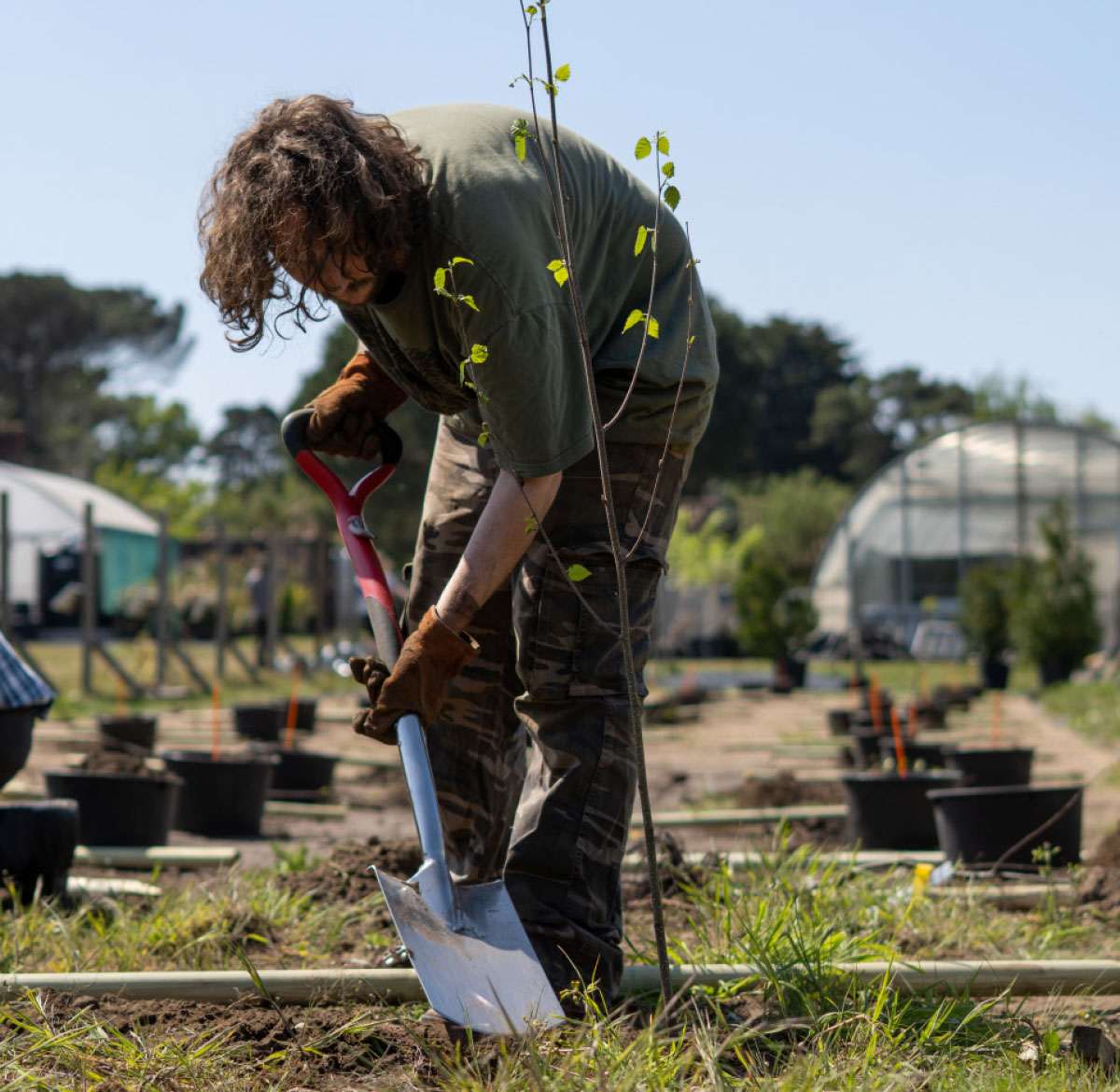
PhD research leader Louis Kosowicz planting the first phase of the field study at rhs wisley
The method
Trees in both the RHS Wisley plots and the growth chambers are being closely monitored across multiple traits to capture a complete picture of their carbon storage potential. One key focus is photosynthetic activity, the process by which plants convert sunlight into energy while capturing carbon dioxide. Using a state-of-the-art Li-Cor 6800 machine, the research team measures gas exchange to determine how efficiently the trees are locking away carbon under different climate conditions. These readings are taken multiple times per week to capture changes as plants develop and respond to seasonal variation.
Growth measurements are also vital. Changes in height, stem diameter, and canopy spread are recorded regularly. In addition, the research looks at how biomass is allocated between leaves, stems, and roots, which affects long-term carbon storage. Leaf biomass and woody stem biomass provide a direct indication of above-ground carbon, while root biomass gives insight into below-ground carbon pools that are often overlooked in landscaping.
Another measurement is specific leaf area, which indicates how much resource the plant invests in leaves. This is important for understanding how plants adapt to changing climates; for example, they may produce thinner leaves with more surface area under higher temperatures to maintain photosynthetic efficiency. Stomatal density, the number of tiny pores on leaves, also reveals how trees control water loss and gas exchange in response to heat and light intensity. Leaf prints are taken to allow precise measurements of these adaptations.
Alongside this, the trees will be destructively harvested to measure their carbon content across different species and ages. These findings will then be used to build a predictive model, comparing current conditions with the simulated future climate. This kind of detailed, species-specific data is rare and extremely valuable for the landscaping industry.
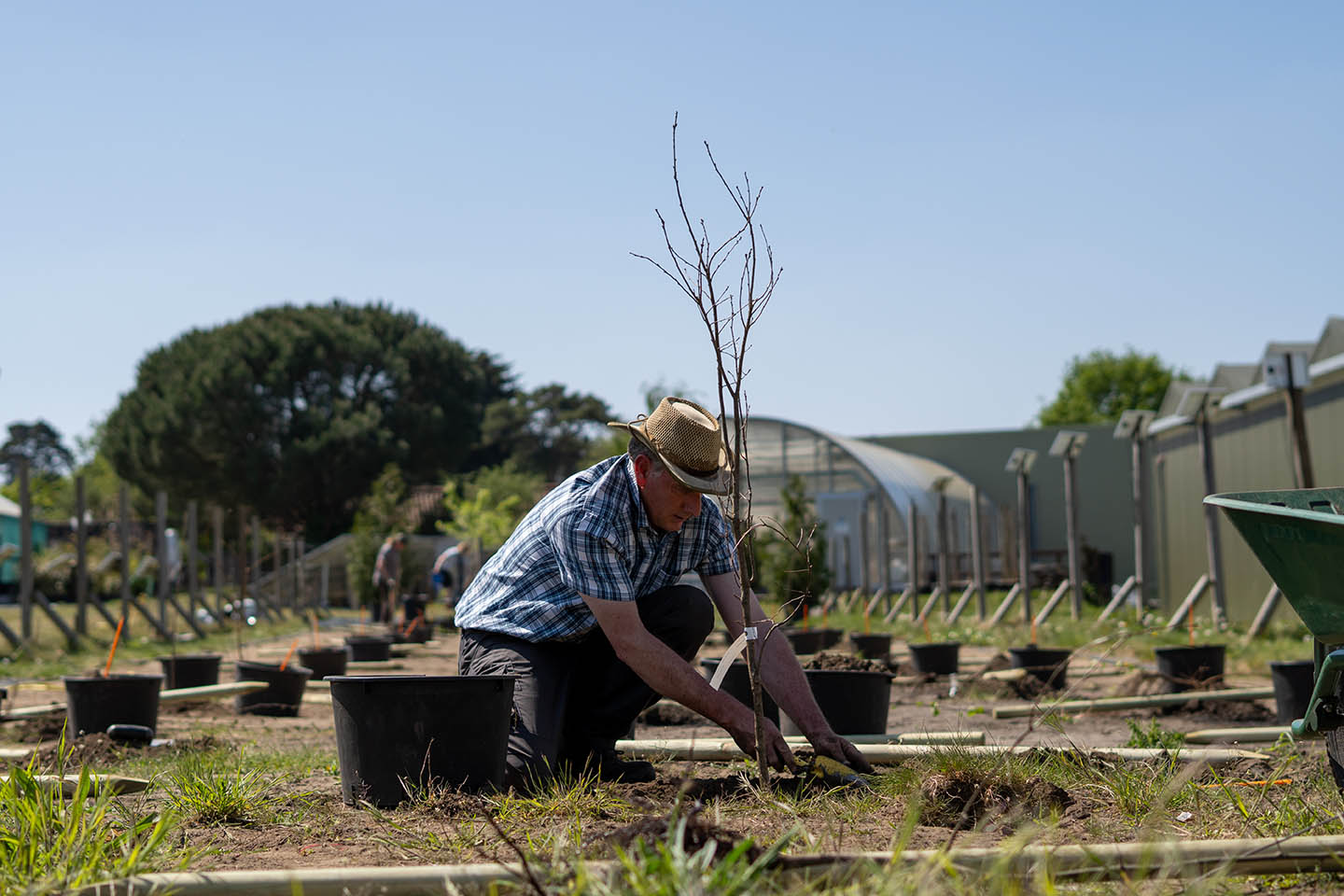
RHS Head of Environmental Horticulture Dr Mark Gush, assisting with field study planting at RHS Wisley
Progress so far
Like any ambitious research project, the PhD has faced challenges. Louis notes that the first few months were particularly demanding as systems were established and equipment calibrated. However, these early hurdles have laid the groundwork for meaningful results. The young trees have responded well, even during the exceptionally hot summer, which provided an unplanned but valuable test of their resilience. Measurements of photosynthesis, leaf morphology, and growth are being collected, and the first stages of destructive harvesting at RHS Wisley are about to begin. The next six months will focus on analysing these measurements, comparing them with control conditions, and building models to predict how carbon storage may change as the climate warms. Louis reflects, “It hasn’t been without issues and challenges, but the initial data shows promising results. We are now in a strong position to start analysing the data and building models that will inform the next stages of the project.”
What comes next
The next phase of the PhD is both exciting and critical. At RHS Wisley, the first stage of destructive harvesting will begin, focussing on trees that have been grown specifically for this purpose. This will provide a direct measure of how much carbon is stored in their biomass, offering a rare and precise dataset. Following this, attention will turn to shrubs and hedgerows, which are hugely important in landscaping but often overlooked in research. Species selection for these trials is now underway, and the findings will expand the project’s relevance beyond trees to the full spectrum of planting used in green infrastructure.
In the climate chambers, the emphasis will shift towards understanding how long-term exposure to simulated future conditions alters growth strategies and carbon allocation. Whilst the data might not be easily compared to the Wisley dataset, it will identify factors which may impact the data from the field-grown trees.
Over the coming year, the research aims to produce insights that will not only benefit academic understanding but also provide practical guidance for landscapers, designers, and policy makers seeking to make evidence-based decisions about planting. Trees and shrubs are essential allies in tackling climate change, but to maximise their potential we need accurate data on how much carbon they store and how they will respond to the climate of tomorrow. This PhD research is helping to close that knowledge gap, combining cutting-edge science with practical outcomes for sustainable design. By measuring plants under both current and projected climate conditions, and by extending the research to include shrubs and hedgerows, the study is creating a foundation for evidence-led landscaping that delivers real climate benefits. This work also reflects a broader commitment to sustainability within horticulture and landscaping. Through partnerships with leading institutions and innovative research, it is possible to push the industry forward, providing the tools and knowledge needed to create resilient, carbon-positive landscapes for generations to come.
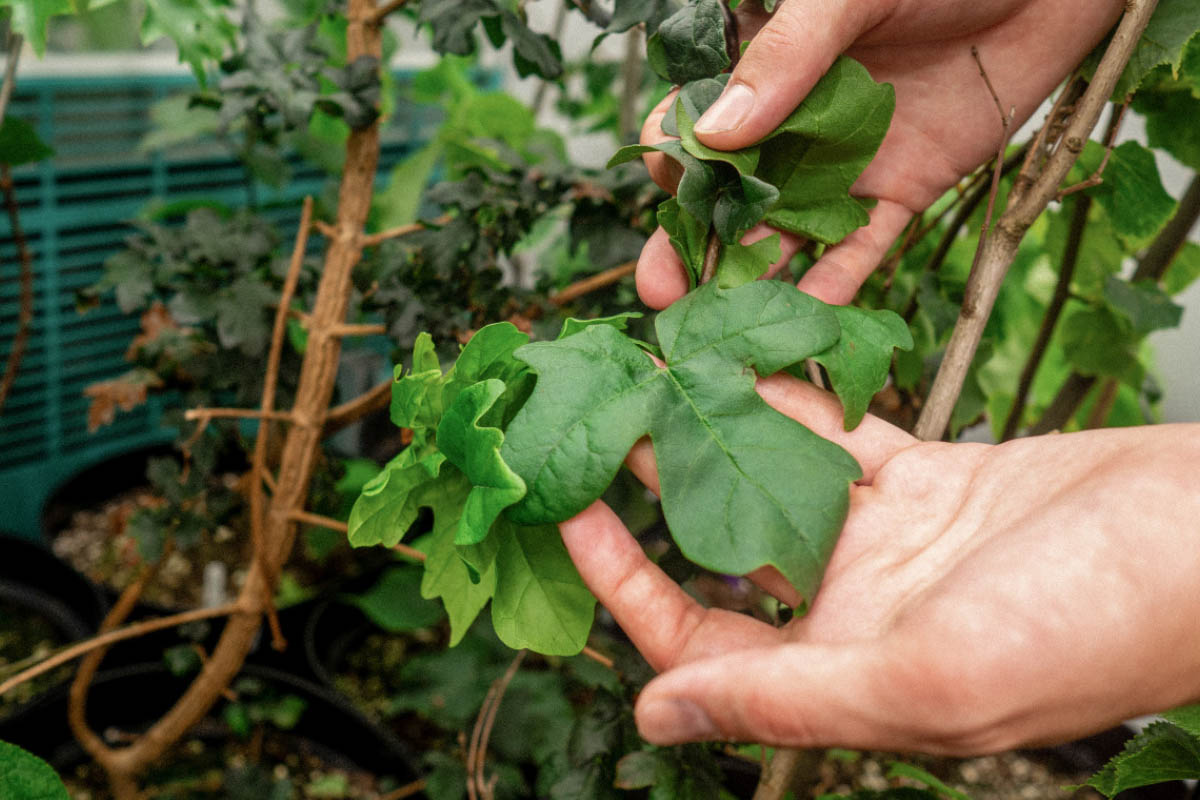
The leaves of study trees being assessed in the growth chambers at University of Sheffield
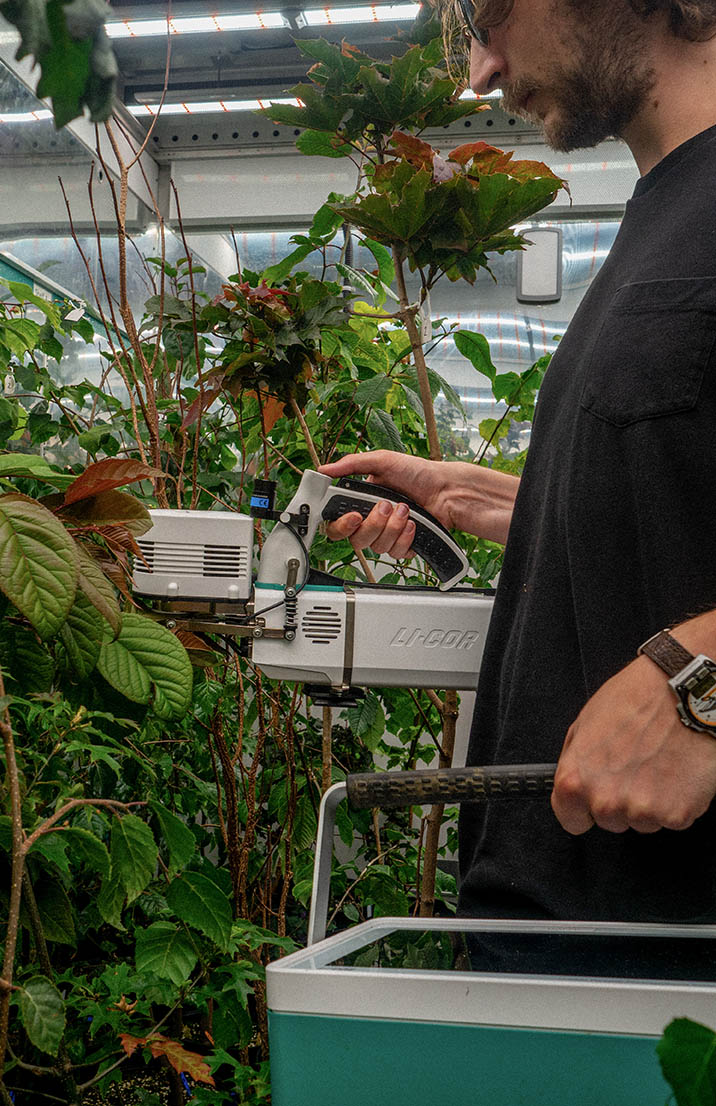
li-cor 6800 machine being used to measure gas exchange within the leaves of the studied trees.
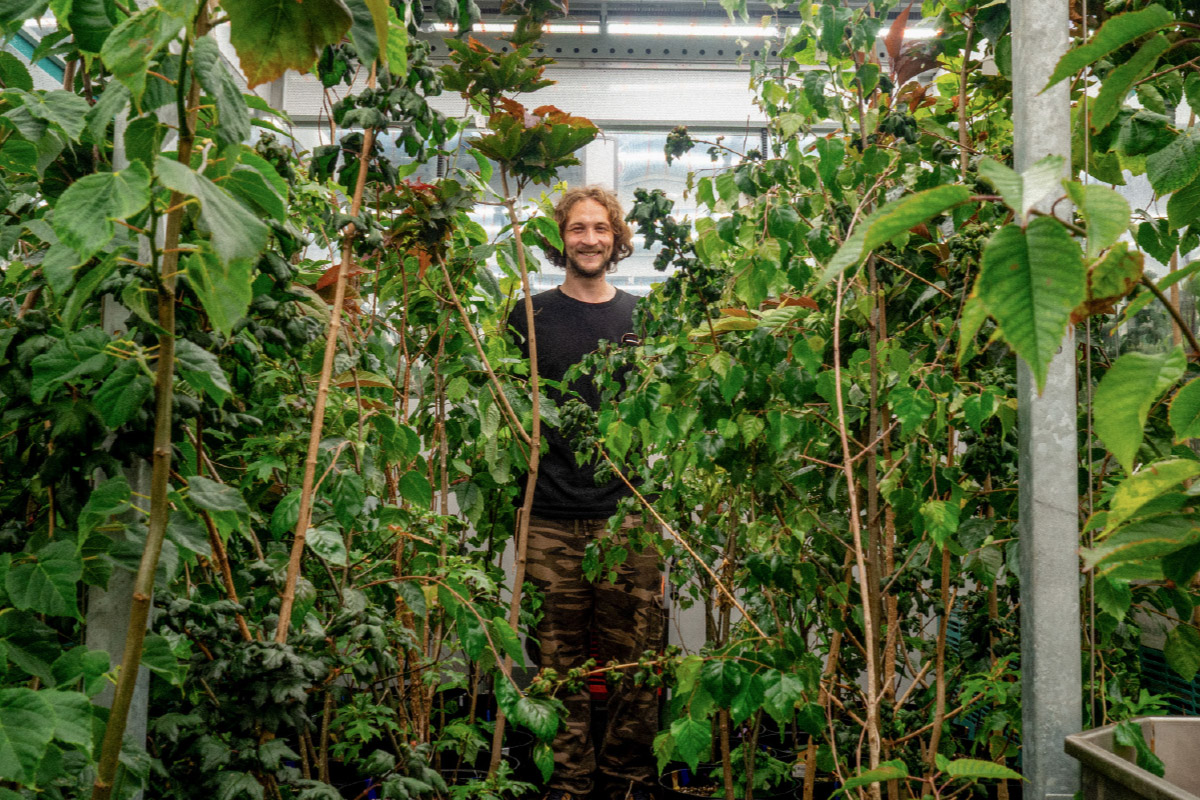
Louis Kosowicz inside one of the climate-controlled growth chambers at the University of Sheffield

